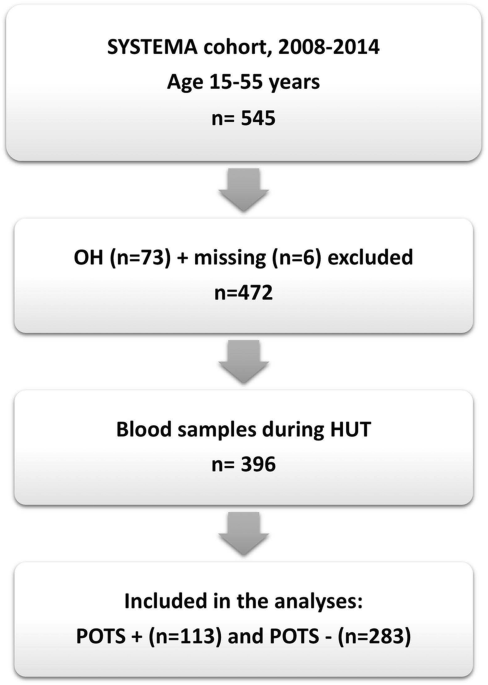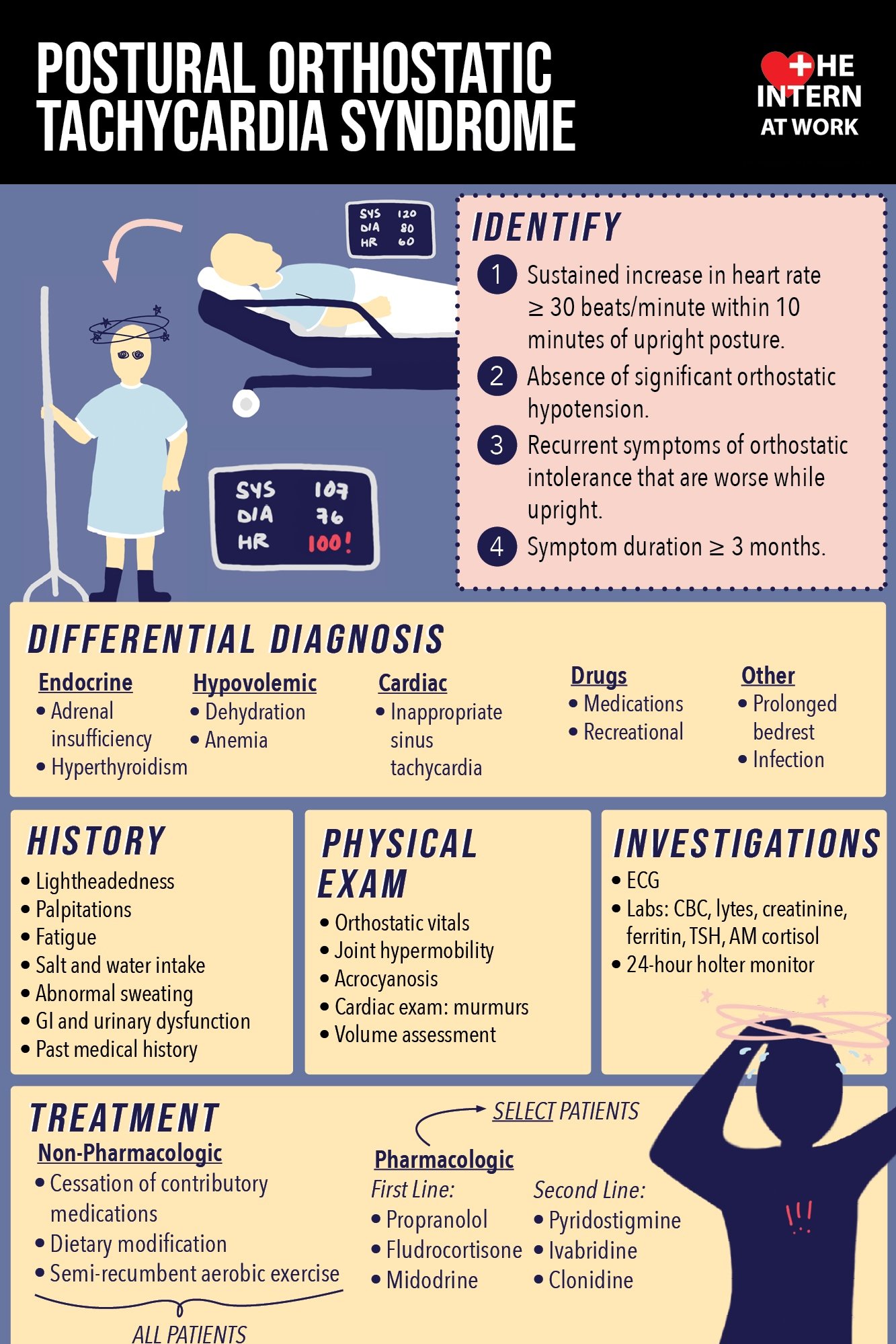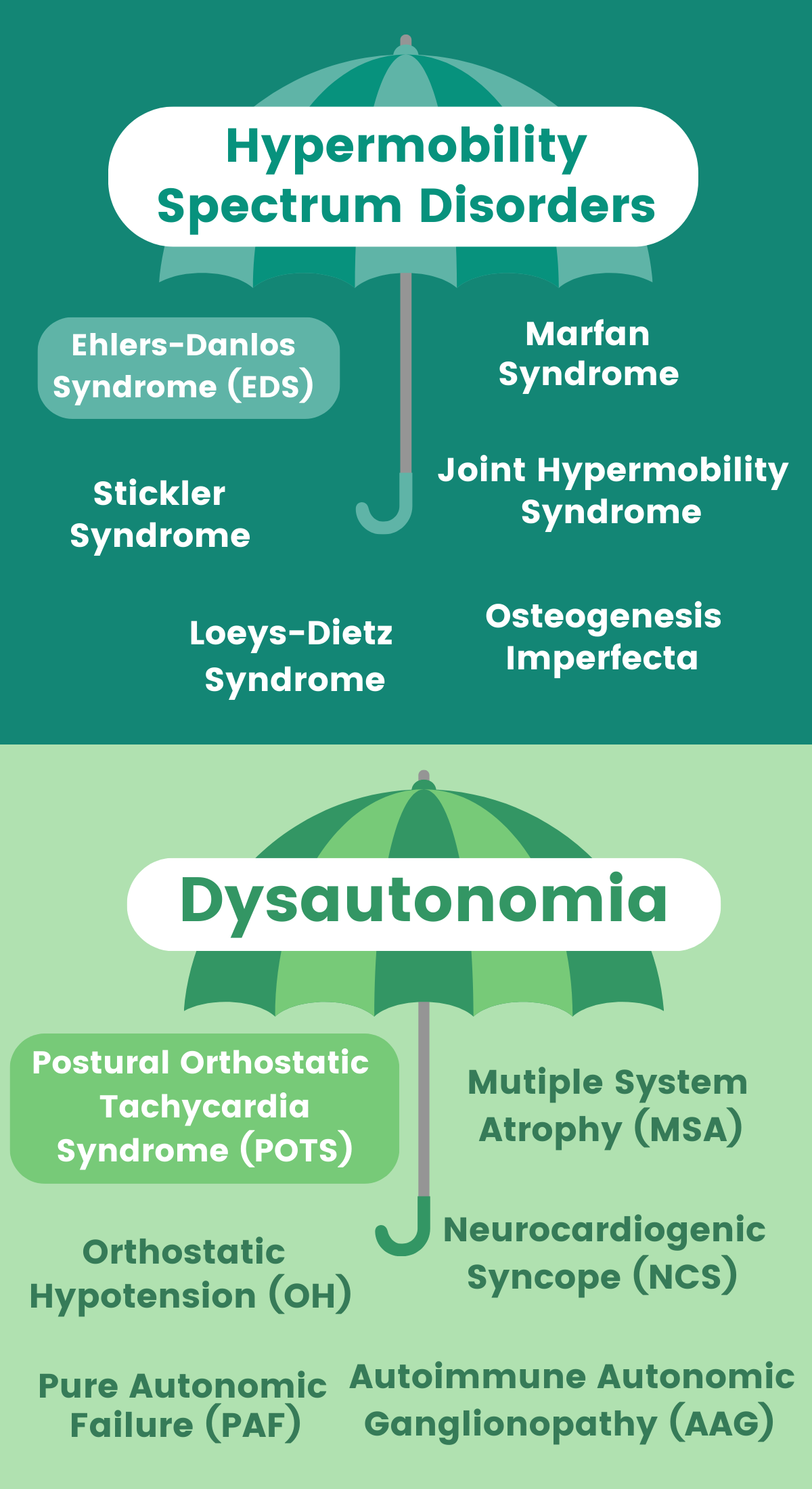Proteomic analysis reveals sex-specific biomarker signature in postural orthostatic tachycardia syndrome, BMC Cardiovascular Disorders

Background Postural orthostatic tachycardia syndrome (POTS) is a variant of cardiovascular (CV) autonomic disorder of unknown etiology characterized by an excessive heart rate increase on standing and orthostatic intolerance. In this study we sought to identify novel CV biomarkers potentially implicated in POTS pathophysiology. Methods We conducted a nested case-control study within the Syncope Study of Unselected Population in Malmö (SYSTEMA) cohort including 396 patients (age range, 15–50 years) with either POTS (n = 113) or normal hemodynamic response during passive head-up-tilt test (n = 283). We used a targeted approach to explore changes in cardiovascular proteomics associated with POTS through a sequential two-stage process including supervised principal component analysis and univariate ANOVA with Bonferroni correction. Results POTS patients were younger (26 vs. 31 years; p < 0.001) and had lower BMI than controls. The discovery algorithm identified growth hormone (GH) and myoglobin (MB) as the most specific biomarker fingerprint for POTS. Plasma level of GH was higher (9.37 vs 8.37 of normalised protein expression units (NPX); p = 0.002), whereas MB was lower (4.86 vs 5.14 NPX; p = 0.002) in POTS compared with controls. In multivariate regression analysis, adjusted for age and BMI, and stratified by sex, lower MB level in men and higher GH level in women remained independently associated with POTS. Conclusions Cardiovascular proteomics analysis revealed sex-specific biomarker signature in POTS featured by higher plasma level of GH in women and lower plasma level of MB in men. These findings point to sex-specific immune-neuroendocrine dysregulation and deconditioning as potentially key pathophysiological traits underlying POTS.

Postural Orthostatic Tachycardia Syndrome Is Associated With Elevated G‐Protein Coupled Receptor Autoantibodies

Serum Activity Against G Protein–Coupled Receptors and Severity of Orthostatic Symptoms in Postural Orthostatic Tachycardia Syndrome

Abstracts - 2024 - Movement Disorders Clinical Practice - Wiley Online Library

Sympathetic activation is associated with increased IL-6, but not CRP in the absence of obesity: lessons from postural tachycardia syndrome and obesity

BMC Cardiovascular Disorders 1/2020

Insulin-Like Growth Factor-1 as a Vascular Protective Factor

Pathogenic mechanisms of post-acute sequelae of SARS-CoV-2 infection (PASC)

Dr. Artur Fedorowski Publications

Small molecule metabolites: discovery of biomarkers and therapeutic targets. - Abstract - Europe PMC

Frontiers The knowns and unknowns of long COVID-19: from mechanisms to therapeutical approaches

ENDOCRINOLOGY AND HEART by antonio machuca - Issuu









